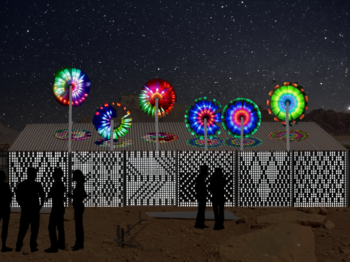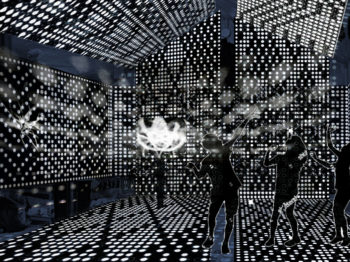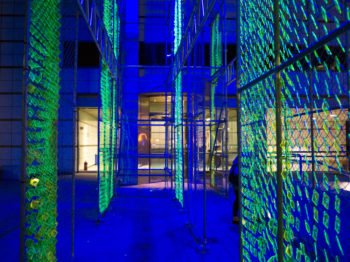Natalie Bellefleur is an architect and designer based in Cambridge, MA. She is a Lead Design Consultant at the MIT Future Heritage Lab and designer at Perkins + Will, Boston. Bellefleur is also a co-founder of SomeThingsWeMade, which explores the future of craft through the marriage of machine automation and the handmade.
Stratton Coffman is an artist and architect based in Cambridge, MA. Coffman works with scores, props, performance sets, videos, and texts to examine overlooked spatial histories of the subject. They are half of the research initiative Proof of Concept with Isadora Dannin and Research Associate at the MIT Future Heritage Lab.
Jaya A. Eyzaguirre is an MIT alumna and former design researcher at MIT’s Future Heritage Lab. Currently based in Chicago, her independent work focuses on endemic approaches to resiliency and how architecture and design is adapted and transformed by its users.
Lillian P.H. Kology is an artist based in Boston, MA. In addition to her studio practice, Kology is an Assistant Professor of Sculpture at Montserrat College of Art in Beverly, MA, and Lead Artistic Researcher at the MIT Future Heritage Lab.
Catherine Lie is an interdisciplinary artist and designer from Indonesia. Her work critically engages time and temporality to unfold the everyday entanglement of the materials she investigates. She recently received her Master of Architecture from MIT with her thesis “Sourdough Architecture” and has practiced in New York, Indonesia, Chile, Puerto Rico, Jordan, and Berlin.
Zeid Madi is an architect and urban researcher based in Amman, Jordan. His work focuses on patterns and networks of formal and informal settlements via critical cartography, GIS, and spatial data analysis. Madi directs the Cluster Labs in Amman, Jordan.
Raafat Majzoub positions his work at an intersection between politics, intimacy, and futurecasting—exploring fiction as a tool for individual and collective agency and as an arena to construct new worlds. Majzoub is the founding director of The Khan: The Arab Association for Prototyping Cultural Practices and Lecturer in the Architecture and Design Department at the American University of Beirut.
Mary Mavrohanna is an architectural designer based in Cyprus, with a degree in Interior Architecture. In addition to her first degree she is currently studying Architecture at University of Cyprus.
Dietmar Offenhuber is a media artist and urban planner based in Cambridge, MA. He is an Associate Professor at Northeastern University in the Departments of Art + Design and Public Policy, where he directs the graduate program in Information Design and Visualization. Offenhuber currently holds visiting appointments at Princeton University and Harvard University.
Melina Philippou, an architect and urbanist, is Program Director of the MIT Future Heritage Lab. Her work explores the agency of spatial practices in the context of forced displacement. She is the design research lead of the work presented in the installation.
Calvin Zhong is a multidisciplinary designer based in Brooklyn, NY. His current work examines issues of media, representation, and technology in architecture. He is currently pursuing the MArch degree at MIT.











